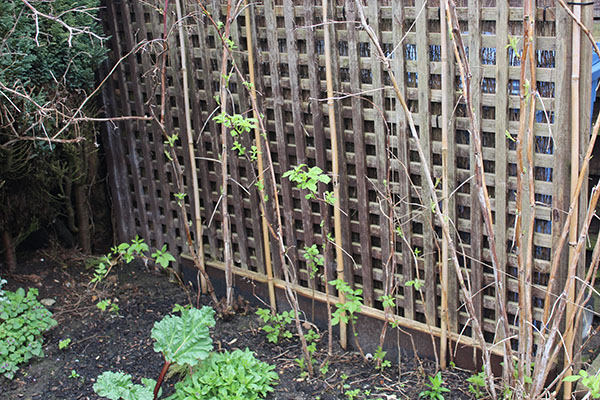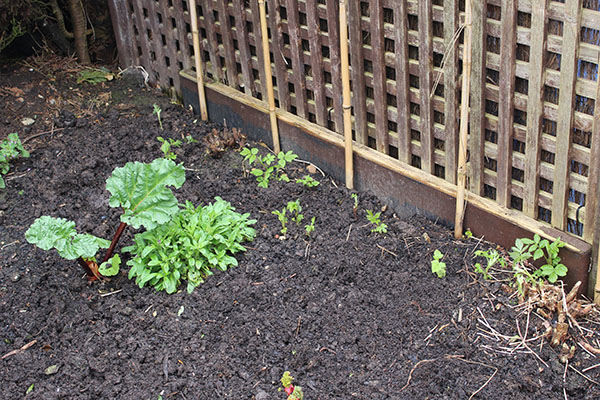Despite the appalling weather, I managed to get out in the garden this week for one of my favourite 15-minute gardening tasks – chopping my Autumn Bliss autumn-fruiting raspberries down to the ground.
It’s hard to imagine that February is the perfect time of year for many gardening tasks, but this is definitely one of them. The plants are dormant at the moment, so a hard prune back to the ground during cold weather won’t damage them. Within a few weeks though they will be ready to shoot back into action, so now is the time to give them the chop.
Simply chop!
Autumn-fruiting raspberries are ‘primocanes’, which means they produce fruit on new wood. I have six Autumn bliss raspberry plants in a small bed near the bottom of the garden. When in leaf they provide a perfect screen in front of the shed.
All you need to do at this time of year is remove last year’s old growth.
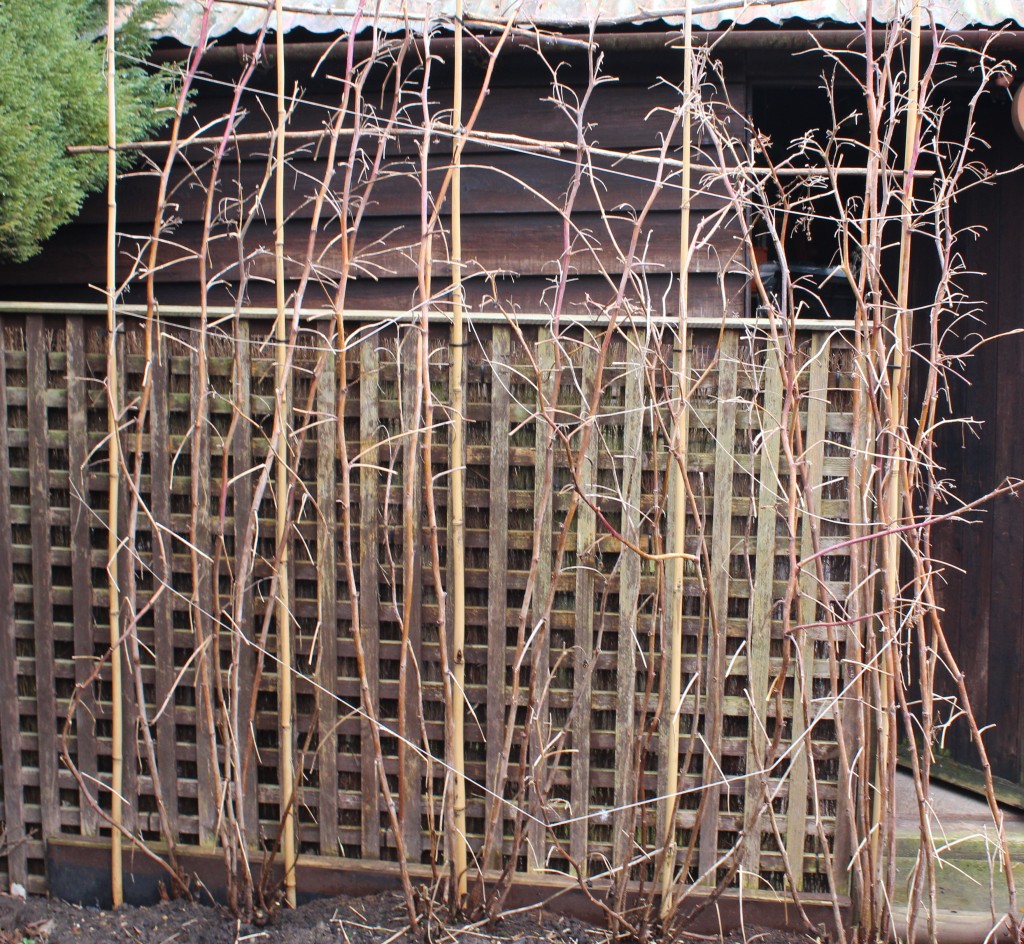
Cut the old canes as close to the ground as you can, making sure your secateurs are sharp for a clean cut.
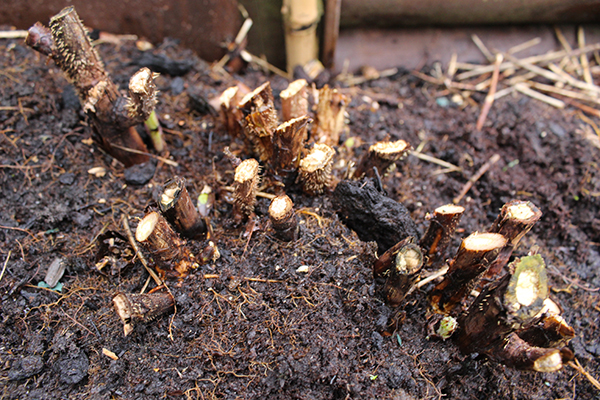
Bonus leftovers
And the great thing is that the old raspberry canes can be put to use in the rest of the garden. I trim off the twiggy side branches and flimsier tips to make sturdy stakes that I then use to prop up my perennials.
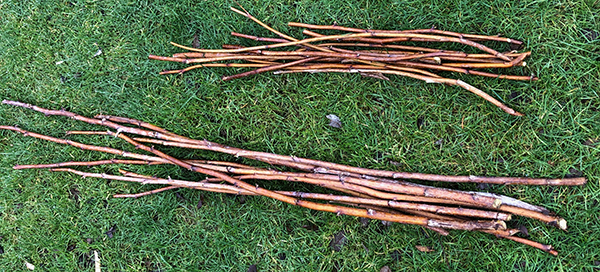
And the twiggy bits can be shredded and used as a mulch, so nothing goes to waste.
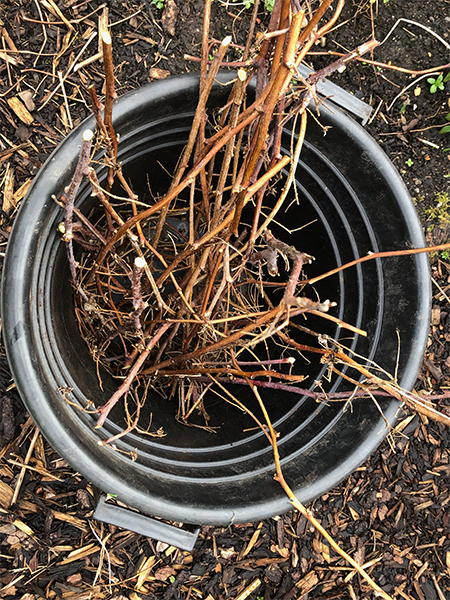
Autumn- vs summer-fruiting raspberries
Summer-fruiting raspberries are slightly more complicated in that they are ‘floricanes’, which means they fruit on the previous year’s wood. The old canes need to be removed after they have fruited to encourage new growth, as that’s what next year’s raspberries grow on.
Autumn harvest
Unlike their summer counterparts, autumn-fruiting raspberries are pretty much self-supporting, although I find they need a bit of string around them to stop them flopping forward over the bed. They start to ripen in late summer and, from just six plants, I get a good harvest that usually lasts all the way into October.

So, if you are new to raspberry growing, I highly recommend giving autumn-fruiting raspberries a go. It couldn’t be simpler.

